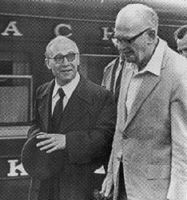 If he was still with us, Sir Arthur C. Clarke would have been 92 today, December 16th. I assume that most readers of this blog know who Sir Clarke is, but, if by some chance you’re not, then you’re missing a treat. Sir Clarke was one of the most prolific and one of the very best SciFi authors we have ever had the good fortune to enjoy.
If he was still with us, Sir Arthur C. Clarke would have been 92 today, December 16th. I assume that most readers of this blog know who Sir Clarke is, but, if by some chance you’re not, then you’re missing a treat. Sir Clarke was one of the most prolific and one of the very best SciFi authors we have ever had the good fortune to enjoy.
His novel The Fountains of Paradise was the book that inspired me and many others to dream about a Space Elevator – and now many of us are working towards making that dream a reality through the International Space Elevator Consortium (ISEC).
The Planetary society recently had a program celebrating their own Planetary Radio’s 7th anniversary. The bulk of the show was replaying a March, 2003 interview they had with Sir Clarke shortly after they began broadcasting. This is a fascinating interview and well worth your time… One of the items from the interview that I found very interesting was Sir Clarke’s revelation about how at lunch one day with JR Tolkien (of Lord of the Rings fame), Mr. Tolkien revealed to him how he came up with the idea of the “Hobbits” – funny stuff…
They also briefly discuss the Space Elevator and The Fountains of Paradise.
Incidentally, the host of the Planetary Society’s Radio Show, Mat Kaplan, shows that he’s always had ‘the touch’ when it comes to conducting interviews – Mat, you’re the best…
This YouTube Video is of Sir Clarke talking about the Space Elevator.
I was just able to locate the vinyl record of “Selected Readings” of The Fountains of Paradise that is shown and referenced in this video. I’ve been looking for it for over a year – I love ebay…
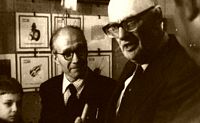 The three photographs of Sir Clarke I’ve included in this post have been, in previous posts of mine about Sir Clarke, but for new readers they should prove interesting. The first picture is of Yuri Artsutanov (on the left), one of the modern day ‘fathers’ of the concept of the Space Elevator, and Sir Clarke. It is undated and I found it online (and, alas, the original location of it no longer exists so I can’t reference it or give credit to anyone for it). The second is also a picture of Mr. Artsutanov and Sir Clarke from 1980 (the other “modern father” of the Space Elevator, Jerome Pearson, kindly emailed it to me). The third picture is of Soviet (yes, at the time it was “Soviet”) cosmonaut Alexei Leonov and Sir Clarke at Sir Clarke’s 90th Birthday party. I found this picture on Thilna Heenatigala’s blog.
The three photographs of Sir Clarke I’ve included in this post have been, in previous posts of mine about Sir Clarke, but for new readers they should prove interesting. The first picture is of Yuri Artsutanov (on the left), one of the modern day ‘fathers’ of the concept of the Space Elevator, and Sir Clarke. It is undated and I found it online (and, alas, the original location of it no longer exists so I can’t reference it or give credit to anyone for it). The second is also a picture of Mr. Artsutanov and Sir Clarke from 1980 (the other “modern father” of the Space Elevator, Jerome Pearson, kindly emailed it to me). The third picture is of Soviet (yes, at the time it was “Soviet”) cosmonaut Alexei Leonov and Sir Clarke at Sir Clarke’s 90th Birthday party. I found this picture on Thilna Heenatigala’s blog.
 Listen to the Planetary radio interview with Sir Clarke, watch the YouTube interview with Sir Clarke and, if you haven’t read The Fountains of Paradise, do yourself a favor and find it and read it – you’ll be glad you did.
Listen to the Planetary radio interview with Sir Clarke, watch the YouTube interview with Sir Clarke and, if you haven’t read The Fountains of Paradise, do yourself a favor and find it and read it – you’ll be glad you did.
Happy birthday Sir Clarke – we miss you and your boundless optimism for the future. Someday we will make a Space Elevator and, if there’s any justice, it will be named the “Clarke Elevator”…
(Click on any of the picture thumbnails to see a larger version of the picture)

 A YouTube clip from a CNN-Chile newscast states that NASA wants to build a Space Elevator (at least that’s what it says when I plug in the caption into Yahoo Babel Fish). Also, I clearly hear the announcer say “Microsoft” during her report. I don’t know if she’s talking about the recent Space Elevator conference at the Microsoft Center or somehow she thinks that Microsoft is going to build a Space Elevator.
A YouTube clip from a CNN-Chile newscast states that NASA wants to build a Space Elevator (at least that’s what it says when I plug in the caption into Yahoo Babel Fish). Also, I clearly hear the announcer say “Microsoft” during her report. I don’t know if she’s talking about the recent Space Elevator conference at the Microsoft Center or somehow she thinks that Microsoft is going to build a Space Elevator. And in this clip (from the Science Channel no less), it says that “NASA is holding a contest to see who can come up with the best plans for building a “space elevator”. I wish that were true. The Space Elevator Games piggyback upon NASA’s desire for power-beaming and strong-tethers – they have no avowed interest in building a Space Elevator (though the NASA people who I talked to at Dryden during the recent Space Elevator Games thought it was a cool idea). The clip also says that the trip to the top will take “3 months”. I don’t know where they got that figure. Even a ride to the end of the tether (100,000 km) would, at 200 mph (320 km/hour) take about 13 days. Add some time in for slowing down during start-up and at the end and maybe a stop/transit at the GEO space station and you still have well less than 1 month to the top. And, the story says that passengers could be “struck by meteroids”… Oh my. They finalize the clip by repeating the lame joke about “Elevator music”. Oh well, at least it IS the Science Channel…
And in this clip (from the Science Channel no less), it says that “NASA is holding a contest to see who can come up with the best plans for building a “space elevator”. I wish that were true. The Space Elevator Games piggyback upon NASA’s desire for power-beaming and strong-tethers – they have no avowed interest in building a Space Elevator (though the NASA people who I talked to at Dryden during the recent Space Elevator Games thought it was a cool idea). The clip also says that the trip to the top will take “3 months”. I don’t know where they got that figure. Even a ride to the end of the tether (100,000 km) would, at 200 mph (320 km/hour) take about 13 days. Add some time in for slowing down during start-up and at the end and maybe a stop/transit at the GEO space station and you still have well less than 1 month to the top. And, the story says that passengers could be “struck by meteroids”… Oh my. They finalize the clip by repeating the lame joke about “Elevator music”. Oh well, at least it IS the Science Channel… And then we have a new
And then we have a new  A few weeks ago, Brian Turner (captain of the
A few weeks ago, Brian Turner (captain of the  Over the past few months, I have received several emails detailing different ideas for Space Elevators, or Space Elevator translations, or general questions about Space Elevators, etc.
Over the past few months, I have received several emails detailing different ideas for Space Elevators, or Space Elevator translations, or general questions about Space Elevators, etc. And so the 2009 EuroSpaceward conference comes to an end. It was very interesting, highly informative and I’m very glad I came. I learned a lot and, more importantly (IMHO), I was able to spend lots of time with Markus Klettner (heading up EuroSpaceward) and Shuichi Ohno (heading up the Japan Space Elevator Association).
And so the 2009 EuroSpaceward conference comes to an end. It was very interesting, highly informative and I’m very glad I came. I learned a lot and, more importantly (IMHO), I was able to spend lots of time with Markus Klettner (heading up EuroSpaceward) and Shuichi Ohno (heading up the Japan Space Elevator Association). We had several very constructive conversations about how to jointly move forward the international effort to build a Space Elevator. This goal is the reason why the International Space Elevator Consortium (ISEC) was founded and I think it is fair to say that the ideas we had and agreements the three of us made will significantly move this idea forward.
We had several very constructive conversations about how to jointly move forward the international effort to build a Space Elevator. This goal is the reason why the International Space Elevator Consortium (ISEC) was founded and I think it is fair to say that the ideas we had and agreements the three of us made will significantly move this idea forward. Over the next few weeks, we will finalize and formalize these agreements and then use them to jointly move forward. I think it will be exciting times for ISEC and the Space Elevator Community as a whole.
Over the next few weeks, we will finalize and formalize these agreements and then use them to jointly move forward. I think it will be exciting times for ISEC and the Space Elevator Community as a whole.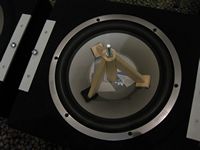
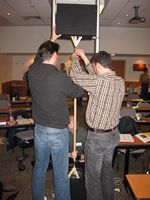
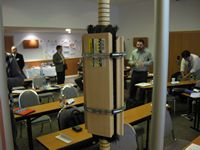

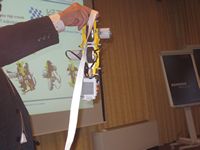
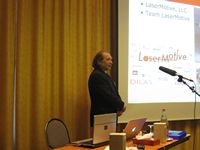
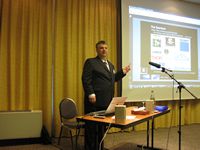
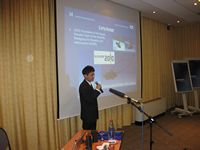
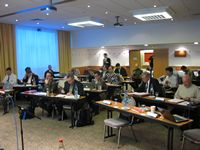
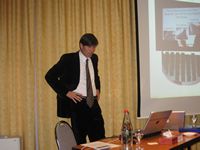
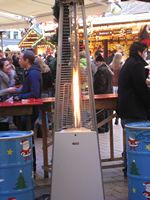




 Sander Olson of the Next Big Future kindly emailed me to let me know that
Sander Olson of the Next Big Future kindly emailed me to let me know that 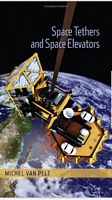

 The picture thumbnail shows several of the drawings I have to judge (click on the thumbnail to see a full size version). I have until Friday, noon, to make my decision.
The picture thumbnail shows several of the drawings I have to judge (click on the thumbnail to see a full size version). I have until Friday, noon, to make my decision. In the many years since the concept of a Space Elevator has been popularized and advanced in Science Fiction, the number of people actively supporting this concept has not appreciably increased. In addition, the theoretical and practical boundaries on the strength of carbon nanotubes are beginning to point towards a material weaker than hoped for (but still strong enough to build a Space Elevator, albeit with reduced capacity). Given these facts, how do those of us in the Space Elevator community move this idea forward?
In the many years since the concept of a Space Elevator has been popularized and advanced in Science Fiction, the number of people actively supporting this concept has not appreciably increased. In addition, the theoretical and practical boundaries on the strength of carbon nanotubes are beginning to point towards a material weaker than hoped for (but still strong enough to build a Space Elevator, albeit with reduced capacity). Given these facts, how do those of us in the Space Elevator community move this idea forward?